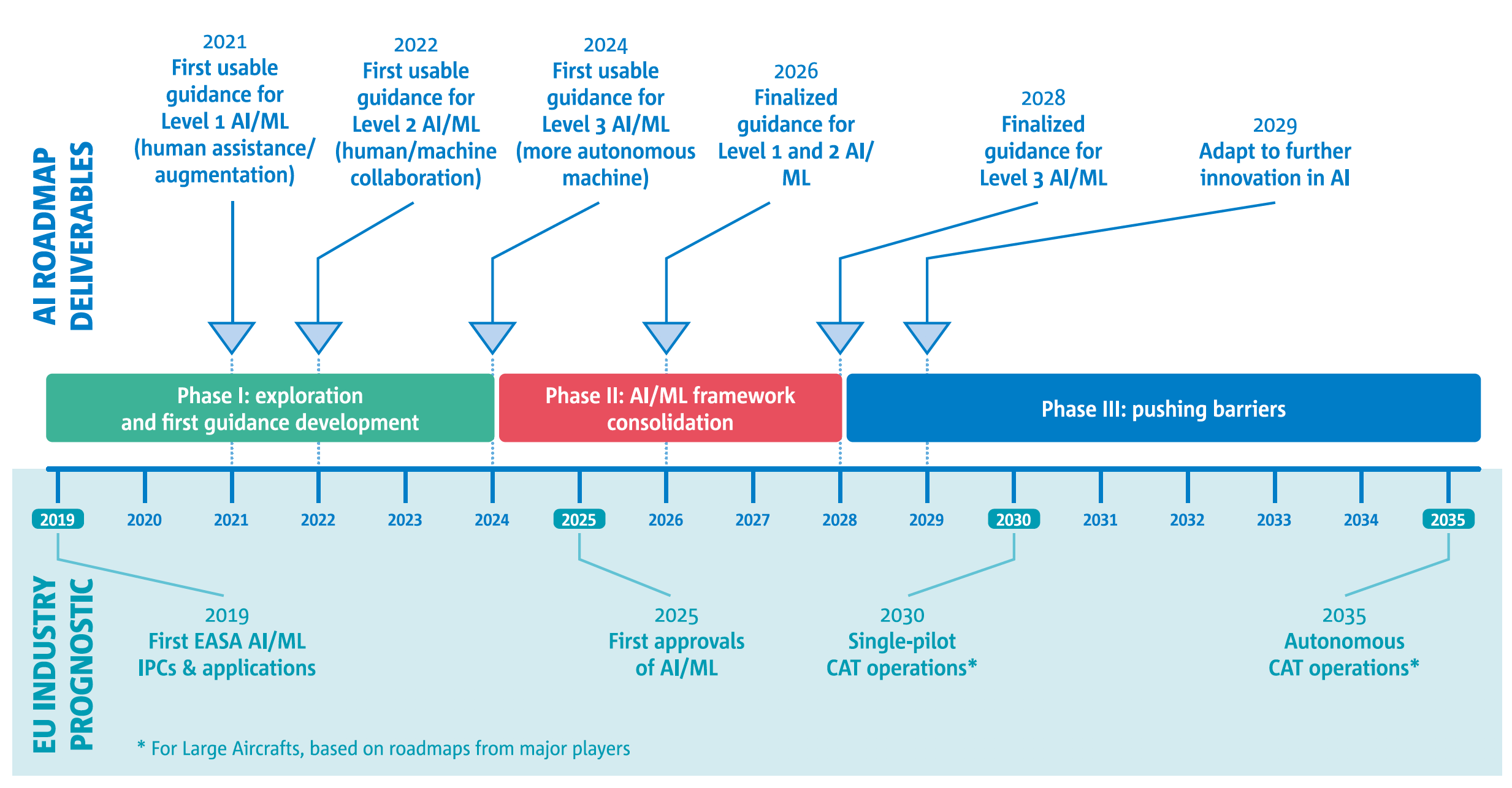Click Here to View This Page on Production Frontend
Click Here to Export Node Content
Click Here to View Printer-Friendly Version (Raw Backend)
Note: front-end display has links to styled print versions.
Content Node ID: 419028
EASA and artificial intelligence specialist Daedalean have completed a 10-month study to pave the way for machine learning and neural network technology to be employed in safety-critical aviation applications. Findings in the just-published Concepts of Design Assurance for Neural Networks (CoDANN II) report, combined with last year's first-phase CoDANN study, were part of the proposed guidance for Level 1 machine learning applications that the European safety agency released for public consultation in April.
Level 1 applications cover the use of artificial intelligence and machine learning technology to assist humans in operating aircraft. More advanced Level 2 and 3 applications cover, respectively, human/machine collaboration and the so-called more autonomous machine. Under Level 2, either the human would perform a function and have it monitored by the machine or vice versa. Under Level 3, a machine would perform functions with no human intervention in operations, but there would still be human involvement for design and oversight functions.
Under EASA’s roadmap for the implementation of artificial intelligence, the first usable guidance for Level 1 human assistance/augmentation and Level 2 human/machine collaboration applications would be available, respectively, this year and in 2022 under an “exploration and first guidance” phase that is due to run through 2024. The more advanced applications called for by later parts of Levels 1 and 2, and also Level 3’s more autonomous machine phase will then be rolled out through 2028.
The EASA roadmap does not explicitly indicate how the guidance may directly lead to increasing levels of autonomous operation in eVTOL aircraft. However, the timeline does show single-pilot commercial air transport operations in airliners being supported by artificial intelligence and machine learning by around 2030, with fully autonomous commercial air transport operations taking place by 2035.
The 136-page CoDANN II report considers aspects of machine learning and neural network technology not covered in the earlier collaboration between EASA and Switzerland-based Daedalean. It also addresses so-called artificial intelligence building blocks linked to the EASA roadmap and steps to mature the concept of learning assurance. The partners have developed what they call a W-shaped development process, which is described in a blog on design assurance for neural networks published by Daedalean in April.
The CoDANN II report covers the implementation and inference parts of this W-shaped process, including hardware, software, and systems and how they can be developed and deployed. It also discusses the required system safety assessment process and how the concept of explainability for neural networks can be defined and applied.
Daedalean used its visual traffic detection system as a use case for the joint study with EASA. The company said that the complex machine learning-based system is representative of planned commercial technology and illustrates the anticipated safety benefits for future airborne applications.
